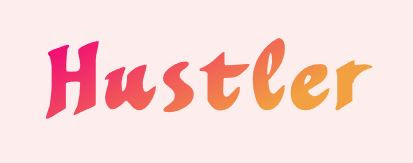When parents first hear that their child has been recommended for 20-40 hours of ABA therapy per week, they often wonder if this level of intensity is necessary and how their child will handle it.
It’s understandable for parents to have questions, especially in the beginning, when it’s all new. According to Jamie McGillivary, BCBA, President and Founder of Healing Haven in Madison Heights and Farmington Hills, ABA is meant to adapt to each child’s needs over time.
“One of the hallmarks of ABA is that it’s customizable,” says McGillivary. “The number of hours should be individualized and based on the child’s needs, the family’s circumstances and what will help the child make meaningful progress.”
McGillivary explains why ABA therapy starts with higher hours and how parents can feel confident in the process.
Understanding ABA therapy hours in early intervention
Research shows that consistent, structured learning experiences help children with autism develop skills more effectively.
“What we know about children with autism is that they need intensity to really capture their attention,” McGillivary explains. “Many aren’t one-trial learners. They need repetition for it to click.”
What this means for your child
- More practice leads to faster progress
- Therapy focuses on learning how to learn, not just specific skills
Parent tip: Don’t think of ABA therapy as a rigid structure — therapy sessions should be engaging, play-based and personalized to your child’s interests.
How long does ABA therapy last?
ABA therapy doesn’t stay at the initial starting intensity forever As children build independence, therapy adapts to their progress.
“Our ultimate goal is to transition kids into school or other settings where they can make sustained and meaningful progress,” McGillivary adds. “And we work closely with families to make sure we’re making the right decisions at every step.”
Parent tip: If you’re concerned about therapy hours, talk to your ABA provider. They should be open to adjustments based on data and your child’s needs.
Does ABA therapy replace school?
Many families wonder how to balance ABA therapy with preschool or school.
Each child is unique. Some thrive in preschool and benefit from ABA as a supplement to their learning. Others struggle with communication, behavior or socialization and may need more therapy time to build foundational skills before transitioning to a school setting.
“If a child is thriving in preschool, we wouldn’t recommend pulling them out for full-time therapy,” says McGillivary. “But if they’re struggling, it may be more beneficial to focus on therapy for a while so they can build the foundational skills needed to succeed in a classroom.”
When ABA therapy can supplement education:
- Your child enjoys school and engages with teachers and peers
- They’re already making progress in a classroom setting
When more therapy might be helpful:
- Your child is struggling in preschool and showing frustration or isolation
- Teachers report challenges with communication or behavior
- They show the need for building foundational skills
Parent tip: If your child is in preschool but struggling, ask your provider about a combined approach — therapy in the morning, preschool in the afternoon, for instance.

The earlier ABA therapy starts, the better
“What we’re trying to do is close a developmental gap as quickly as possible,” McGillivary explains. “If a two-year-old is testing at a one-year-old level, we have a one-year gap to address. But if a child starts therapy at 10, that gap may be five years or more. The sooner we intervene, the smaller that gap — and the better we can help the child gain independence.”
Parent tip: It’s never too late to start therapy, but starting as soon as possible can make a big difference.
Parents should always feel involved and informed, McGillivary says. “If something doesn’t feel right, ask questions. Trust your instincts. The goal is to help your child thrive — and we’re here to walk that journey with you.”
Learn more:
- The importance of early intervention for autism
- Autism acceptance and finding community
- What are the three levels of autism and what do they mean?
This content is sponsored by Healing Haven, an ABA therapy center with locations in Madison Heights and Farmington Hills. Learn more about Healing Haven’s unique ABA therapy programs for ages 2 to young adult. Visit thehealinghaven.net.
from Metro Parent https://ift.tt/zxZbDWo










0 comments:
Post a Comment